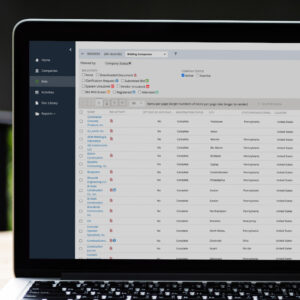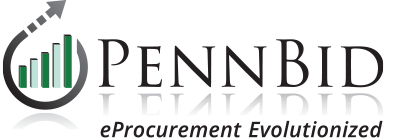 Procurement. Purchasing. Competitive Sealed Bidding. RFP’s, RFIs & RFQ’s. Public Solicitations. Quotes. Single or multi-prime contracts. Chances are, you’re familiar with these terms, and your reaction to them begins with a slight tingling at the base of your skull that slowly grows into a dull, throbbing head-spin as you start assessing the myriad of pieces that need to come together to make the process go smoothly. In fact, most of us know somebody or have personally experienced some type of procurement that has been nothing but one headache after another. No matter the size or complexity of the project at hand, it always seems that the procurement phase is the one element that has most people on edge. That’s because this is the part of a project when plans and ideas become reality, or where “the rubber meets the road.” This is also when items that are beyond the control of project owners come into play. To name just a few: public scrutiny of pricing, unqualified bidders, challenges to awards, or everyone’s worst nightmare – no bidders or interest at all. To be apprehensive at this time is only normal.
Procurement. Purchasing. Competitive Sealed Bidding. RFP’s, RFIs & RFQ’s. Public Solicitations. Quotes. Single or multi-prime contracts. Chances are, you’re familiar with these terms, and your reaction to them begins with a slight tingling at the base of your skull that slowly grows into a dull, throbbing head-spin as you start assessing the myriad of pieces that need to come together to make the process go smoothly. In fact, most of us know somebody or have personally experienced some type of procurement that has been nothing but one headache after another. No matter the size or complexity of the project at hand, it always seems that the procurement phase is the one element that has most people on edge. That’s because this is the part of a project when plans and ideas become reality, or where “the rubber meets the road.” This is also when items that are beyond the control of project owners come into play. To name just a few: public scrutiny of pricing, unqualified bidders, challenges to awards, or everyone’s worst nightmare – no bidders or interest at all. To be apprehensive at this time is only normal.
Like most things within the public sector, the procurement process is one that deals with a fair amount of regulation, and with good reason. Public agencies are the fiduciary stewards of constituent and rate payer dollars, and having rules that ensure those dollars are spent wisely is something that few people argue. However, even those who are regularly involved with procurement, keeping all of the “opportunities for error,” or OFE’s in check can seem impossible. There are currently over twenty (20) different pieces of legislation dealing with procurement and purchasing for public agencies at the State level. This doesn’t even include local charters, codes that may be applicable, or regulations that come into effect due to project driven circumstances, such as grants or supplemental funding.
To be honest, there isn’t really 1,001 steps to pain-free procurement, but there is a huge opportunity to help those who deal with procurement on a regular basis so that they can approach their procurement needs more holistically while minimizing OFE’s. When purchasers (usually project owners and/or their agents) fully understand the options and limitations applicable to the project at hand, the process becomes pain-free, and often even rewarding. According to Doug Bilheimer, Executive Director for PMAA: “PMAA recognizes that the broad topic of procurement can present a variety of challenges to our members and affiliate members. We feel that providing a dedicated section of the Authority towards exploring these issues will be of great value to everyone.”
In each edition, we will delve into the particulars of procurement sub-categories, offering perspectives from various professionals including authority leaders, design professionals, solicitors, funding agencies and others. We will discuss and address common and obscure issues alike, such as:
- Obtaining historical project or product costs to prepare budgets and estimates.
- What is the MUA Energy Procurement Program?
- How does Contractor Bonding affect the quantity/quality of bids and should we care?
- How do we find and retain qualified vendors/bidders?
- Leveraging great resources such as PENNVEST.
- How to deal with DBE notification and deeper vendor inclusion.
- What is the L3P (Local Public Procurement Program)?
- COSTARS versus local purchasing – which is right for us?
- What are Cooperative Purchasing Agreements?
- How do Right to Know requests for bidding documents work?
- Procurement Best Practices
It is our hope that through this outreach we will assemble a collective of professionals who, as a group, will be able to take the lead role in championing procurement-related issues and who can serve as a clearing house for various ideas and suggestions. Additionally, we are looking for topics of interest from our readers so that we can truly focus on your procurement needs. To submit suggestions, or if you have a unique procurement experience you would like to share, please email your ideas to info@pennbid.net, with “Procurement Corner” in the subject line.
A PMAA-endorsed program, PennBid is the pinnacle benchmark e-procurement and electronic bid management Program in Pennsylvania. Provided at absolutely no cost to public agencies and design/consulting firms, PennBid has opened doors for many to take advantage of electronic procurement tools generally not available due to high cost and system complexity.
For more information on PennBid, contact us or request a 30 minute overview.
